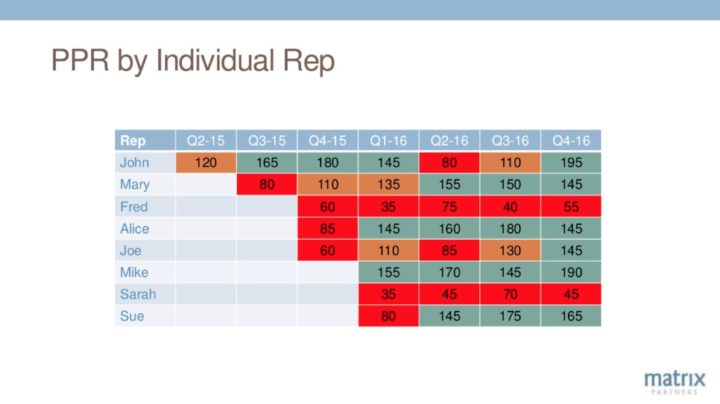I just returned from an excellent day at SaaStock On Tour in New York yesterday. The day was packed full of great speakers and topics, but judging by my notes, David Skok’s presentation on growing a SaaS business left the biggest impression on me. Below is a write-up of my notes and takeaways from the session.
About David Skok: David (@bostonVC) is a serial entrepreneur turned VC at Matrix Partners. He invests in SaaS, cloud and infrastructure businesses. For many, David’s writing on SaaS at forentrepreneurs.com is a go-to for guiding principles on measuring and implementing sustainable growth. His thought leadership on SaaS metrics informs a great deal of our work at ChartMogul!
What it means for a SaaS company to be truly focused
“You will know you’re focused when it really hurts to say no to something.”
David Skok, Matrix Partners
A lot of startups think they’re hyper-focused on what they’re building, but many of them confuse focus with drive to execute on a vision that they have. In David’s view, true focus is about saying no to things — but not just trivial things. You know when your company is truly focused when you have to say no to something that really hurts.
The best example of this would be a large enterprise customer asking you to build them a customer feature that simply doesn’t fit within your vision or roadmap for the product. Depending on the size of the check that you’re turning down, this can be a painful decision to make.
Measuring funnel conversion effectively
Most SaaS businesses know and rely on the funnel model for understanding the economics of their growth. Website visitors enter at the top of the funnel and (many steps later) a much smaller number of new customers pop out of the “thin” end. David also explained how it’s helpful to expand and extend the funnel beyond this point, driving focus on customer expansion and up-sell.
The main point here was around how conversion rates at each stage of the funnel are measured — this is where a large number of businesses make mistakes. In order to effectively measure conversion, you need to use a cohort-based approach, typically on a month-by-month basis, i.e.:
- Take a single cohort of users, such as “users who signed up in month X”
- Measure how many of the defined cohort exist at a specific step of the funnel, e.g. “signed up for trial”
- Measure how many of the cohort defined in step 1 proceed to the next stage of the funnel, e.g. “purchased paid plan”

Once you have good conversion rate measurements for each step of the funnel, David gave a nice tip for balancing sales and marketing spend: reverse the funnel! If you know that to get one new paid customer you need 100 new trials, and to get 100 new trials you need to have 10,000 unique website users, then this can help you plan and set targets at each end of the funnel. There’s no point scaling your sales team to handle hundreds of new leads if you’re not planning for marketing to deliver the volume of traffic required to achieve that.
Building a repeatable sales organization
Building and scaling a sales organization in SaaS is the kind of investment that carries huge risk. David gave some strong advice on the topic, and outlined common pitfalls.
First of all, the most common mistake in SaaS is that people just don’t hire sales fast enough.
You need to remember that sales reps have both a ramp-up time and a capacity. It’s a common mistake to not account for this, hiring too late. This means that your existing rep hits capacity before the new one is fully up to speed. Because of this, growth in SaaS startups often comes in “discontinuous units”, or step changes. You should try to get a feeling for the sales rep ramp up time in your business, and implement a solid sales training program to shorten this ramp.
Two useful measurements to know when scaling your sales organization:
- PPR (Productivity per rep) = new ARR booked (usually per quarter)
- Sales Capacity = number of productive reps X average productivity per rep
Remember that lead flow also feeds into sales rep productivity!
Look at the growth of rep productivity over time. You can even do a cohort style analysis of sales rep productivity to identify problem periods for specific reps:

The goal of all of this is to build a repeatable sales motion that can scale efficiently.
As a rough target, try to have 75% of sales reps delivering more than 75% of their quota, and at least 50% of sales reps delivering 100% of their quota.
The most important components of SaaS success
It’s all about dollar renewal rate (or MRR renewal/retention rate). Often, the greatest emphasis is put on acquisition with far less thought going into nurturing renewal. Negative dollar churn is critical for SaaS success.
The two biggest factors David identified that affect renew rates are:
- Whether the customer onboarded successfully
- Whether the champion (the key person using your product) is still at the company
To get meaningful expansion you will need to experiment with pricing and packaging — your product should be designed for customers to naturally expand over time.
The dreaded SaaS cash flow trough
The cash flow situation for fast-growing SaaS businesses can look pretty grim. This is because of the “cash flow trough” — the benefits of any investment in SaaS growth take some time to come to fruition. The faster you grow, the worse your cash flow looks.
The key metric to look at here is months to recover CAC, or CAC payback period. One of the most components of CAC is sales complexity — David shows that this relationship is actually exponential.
CAC payback period should usually be less than twelve months. In the case of Zendesk it was around eight months. This was one of the main reasons why they were able to experience rocketship-style growth.
At one end of the scale, a product with self-service signup and onboarding can have a minimal CAC (and therefore a short payback period). David’s data shows that adding human touch to the signup and onboarding process increases cost dramatically.
Other gaps in cash flow include that of the sales reps themselves. A sales rep is a fixed ongoing cost from day one. But the value they deliver to the business (in the form of ARR) increases over time. Therefore rapidly scaling a sales team can result in a pretty deep cash flow trough.
Aligning your team around growth
At a high level, all of the topics above are focused around using growth levers in SaaS to keep a business balanced and ensure that any single moving part isn’t starved of oxygen.
David finished with an organizational initiative that might seem quite obvious but is critical for achieving and maintaining optimal balance. Assemble your leaders in sales marketing and customer success into a growth team. Get these people in a room regularly — each of their areas relies upon the others to scale efficiently and deliver the planned results. “Growth” is not a separate role here.
